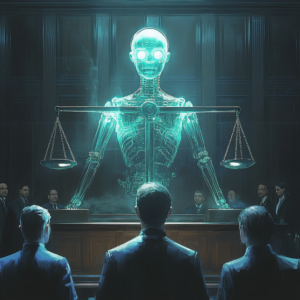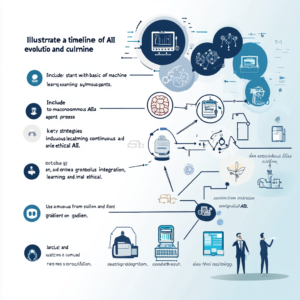
The AI Hype: A Tale of Promises and Energy Drain
Remember when AI was the shiny new toy everyone wanted to play with? It was just a few short years ago that we all stood in awe as ChatGPT-3.5 dropped like a gift from the gods of technology, promising to revolutionize communication and creativity. Roll the clock forward to 2025, and it feels more like AI has turned into that overhyped gadget collecting dust in the back of the cupboard. The latest revelations from The Register highlight that Microsoft’s AI saga is fraught with challenges, revealing that despite their ambitious claims of energy efficiency, AI applications are falling short and businesses across the board are losing their enthusiasm fast.
Microsoft’s High-Hopes vs. Hidden Realities
Microsoft’s stance is clear—they proudly boast that their cloud services are 93% more energy-efficient than older data centers, thanks to a sprinkle of AI wizardry. But peel back that glittering façade, and you’ll find an intricate web of contradictions. Their jaw-dropping $80 billion investment in AI-related infrastructure points toward a relentless drive to scale rather than a commitment to genuine sustainability. Yes, they’re playing with underwater data centers and suave liquid cooling, but at what cost? The reality is that training massive neural networks is a ravenous beast and traditional infrastructure is struggling to keep pace.
AI Adoption: A Slippery Slope of Disillusionment
The AI adoption rollercoaster has taken a sharp dive, particularly in the U.S., where the Slack Workforce Index indicates that growth has plummeted to a pathetic 1% at the end of 2024. How did we get here? Leaders in organizations are left scratching their heads, overwhelmed by the complexities of implementing AI. Tools like Microsoft Copilot, advertised as the holy grail of productivity, are languishing in pilot programs and failing to deliver the promised return on investment. Instead, they are mostly limited to mundane tasks, and that’s just not cutting it.
- Eye-Watering Costs: AI can be an exorbitant playground, and licensing fees often feel like a ticket to a fancy amusement park where the rides don’t even work. Many businesses are staring into the abyss, questioning if this is truly worth the investment.
- Technical Faux Pas: Models like ChatGPT and Copilot are notorious for providing answers that sound plausible but are grave miscalculations. A recent study published in Nature highlights that larger models often yield worse results rather than the expected cutting-edge precision.
- Legal Quagmires: Companies still tread lightly around the regulatory constraints concerning AI ethics, creating a perfect storm of uncertainty that stifles innovation.
The Great Trough of Disillusionment: What’s Going Wrong?
Gartner’s Hype Cycle has clarity… and we’re smack-dab in the “Trough of Disillusionment” territory. Conversations across forums, like those on The Register, suggest that a significant part of what we call AI is simply nostalgia wrapped in fancy marketing jargon. Essentially, what’s being lauded as “cutting-edge” is often just a more advanced version of pattern recognition that’s been around since the 80s and 90s, riding on the coattails of computational power.
It’s almost painful to watch as Microsoft’s tools, intended to alleviate workload burdens, have morphed into bureaucratic obligations. Take a moment to laugh at the absurdity—are we really creating “innovative” systems designed to generate weekly reports on meme-stocks like Dogecoin? The relentless cycle of inefficient AI is a tragicomedy unfolding right before our eyes.
Microsoft’s Green Strategy: Genuine Shift or Just PR?
Diving deep into Microsoft’s ambitious claim to be carbon negative by 2030 sheds light on more than mere metrics. They strategize around three main pillars: optimizing data centers, advancing low-carbon materials, and improving AI efficiency. On paper, it looks impressive. There’s talk of renewable energy initiatives, sleek liquid cooling systems, and even underwater data centers, which sound futuristic but are just concepts for now. The reality is sobering; those shiny green initiatives may be struggling to counterbalance the massive energy appetite required to fuel all that AI activity.
Even if their carbon-negative goal sounds appealing, it raises eyebrows when paired with the relentless growth of AI initiatives that potentially drain more energy than the solutions they propose. That underwater data center experiment near the Orkney Islands is thrilling as a concept, but scaling it for global application can resemble trying to optimize a flip phone for today’s smartphone demands—an uphill battle.
Conclusion: The AI Gimmick—A Phase or a Footnote?
The current landscape of AI is akin to hastily throwing together a feast with all the wrong ingredients: your initial excitement morphs into despair as disillusionment sets in. Microsoft’s quest to squeeze efficiency from its cloud empire is likable but insufficient against the rising tide of AI energy demands. As we step into Gartner’s Trough of Disillusionment, the burning question is: Can AI truly advance beyond its stifling limitations or will it indeed become a mere annotation in the chronicles of technological history?
Want to stay up to date with the latest news on neural networks and automation? Subscribe to our Telegram channel: @ethicadvizor.

